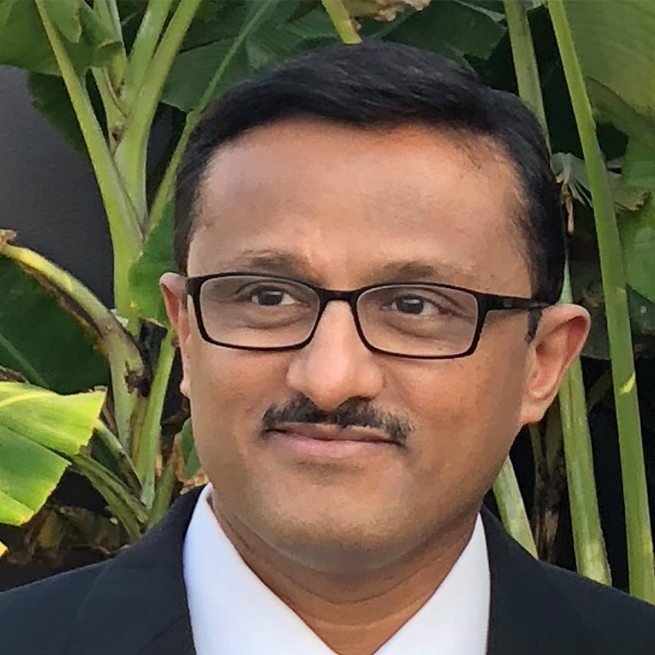Stylish physicians aside, ophthalmology is typically not associated with haute couture – however, like fashion, it is an industry that plays close attention to trends, be it in innovation, medical or surgical technique.
So, as we kickoff the ‘Fall 2019 Congress Season’ at EURETINA in Paris – the home of high fashion – PIE Magazine got the scoop on what’s ‘haute’ on the minds of posterior segment doctors. Below, trend-setting vitreoretinal specialists from the U.S. and India, discuss the fabrics, needles and threads shaping patient outcomes for back-of-the-eye conditions.
The Fabric
When creating a new design, selecting the right fabric is crucial – you wouldn’t want a summer dress made from wool, or a winter jacket made from chiffon! Like fabrics are chosen to fit the season, drugs are designed to fit the condition or disease pathway. And although we’re not dressing eyeballs for the catwalk, determining the right ‘fabric’ is key for patient’s visual outcomes . . . and this season, new molecules are trending.
Evidence of this trend was found at the Ophthalmic Innovation Summit (OIS) held recently in Chicago, where a collection of upcoming therapies – including potential new drugs for dry age-related macular degeneration (AMD) – modelled their benefits to a decidedly stylish crowd. [Ed. Note: See page 41 for more OIS highlights!]
Dr. Brett Foxman, the chief of the Division of Ophthalmology at Shore Medical Center in New Jersey, USA, has also noted that new molecules are in vogue: “Intravitreal therapies with new mechanisms of action and classes of chemicals are currently trending – as well as those targeting different diseases and those decreasing treatment regimens.”
From India, Dr. Alay Banker, the director and chief vitreoretinal surgeon at Banker’s Retina Clinic, in Ahmedabad, agrees that newer molecules, which target pathways other that VEGF – as well sustained delivery devices, including nano and suprachoroidal delivery systems – are popular in medical.
In particular, therapies to treat dry AMD with geographic atrophy (GA) – a condition with no current cure – are in style. “It looks like there are new meds on the horizon to treat dry AMD with geographic atrophy that may actually increase visual acuity – not just slow progression,” said Dr. Foxman.
One such therapy noted by Dr. Foxman – and fresh from the OIS and the American Society of Retina Specialists (ASRS) runway – is elamipretide, which targets mitochondrial dysfunction. Results from a recent study1 – which assessed the safety, tolerability and efficacy of elamipretide in dry AMD – were displayed fashionable in a poster at ASRS 2019.
Specifically, the investigators studied the effects of the elamipretide on leakage-independent vision loss in fellow, non-study eyes with neovascular age-related macular degeneration (nAMD) in the ReCLAIM study. They found that that the mean change in standard BCVA in fellow eyes with nAMD was +6.3 ± 5.0 letters (p<0.001) – resulting in a ≥6-letter BCVA gain in 54% of fellow eyes, and a ≥10-letter BCVA gain in 31%. Meanwhile, the mean change in LLVA (low luminance visual acuity) in fellow eyes with nAMD was +6.4 ± 4.8 letters (p<0.001) – also resulting in a ≥6-letter LLVA gain in 54%, and ≥10-letter LLVA gain in 31%. They concluded that subcutaneous administration of elamipretide for dry AMD was associated with improved vision in fellow, non-study eyes with nAMD.
Another promising drug is APL-2, a complement factor 3 inhibitor, which has shown to reduce GA growth in a phase 2 trial (Filly).2 Dr. Foxman says: “[APL-2] is a new type of molecule for use in the eye to inhibit a pathway (that has not yet been treated by intravitreal injection) for a condition that, so far, we don’t have a treatment for.”
The Filly trial enrolled 246 patients with GA at more than 40 clinical sites in the U.S., Australia and New Zealand. Patients received monthly or every other month (EOM) intravitreal injections of APL-2 for the first 12 months and then received no treatment up to month 18. At 12 months, patients with monthly injections had a 29% reduced GA growth rate, while those on EOM treatment were reduced by 20%, compared to sham. From 12-18 months, patients received follow-up, but no treatment – and during this period, GA lesions in both treated groups grew at a rate similar to the sham group: Patients previously receiving monthly treatment showed only a 12% reduction, while those in the EOM group decreased to 9%.3 Additional phase 3 trials are scheduled, with results in the next few years.
Dr. Foxman also mentioned two up-and-coming drugs for targeting nAMD: brolucizumab and faricimab, noting the HAWK and HARRIER, and STAIRWAY trials, respectively.
HAWK and HARRIER were similarly designed phase 3 trials that compared brolucizumab with aflibercept to treat active choroidal neovascularization due to nAMD in 1,817 patients. It was found that “brolucizumab was noninferior to aflibercept in visual function at week 48 . . . and while overall safety was similar between the two drugs, anatomic outcomes favored brolucizumab over aflibercept.4
Next on the runway is STAIRWAY5: A 52-week study that assessed two extended dosing regimens of faricimab (6.0mg at every 16- or 12-weeks), compared to ranibizumab (0.5mg every 4 weeks). In the two faricimab groups, the mean improvement from baseline was 11.4 letters in the 16-week group and 10.1 in the 12-week group. The mean improvement for patients in the ranibizumab group was 9.6 letters. The authors found the three treatment regimens were similar in terms of patients gaining, or a avoiding a loss of, more than 15 letters. The safety profile of faricimab was also consistent with other intravitreal anti-VEGF therapies.
Of course, there are many fabrics to choose from in fashion. Likewise, there are numerous molecules in the drug development pipeline other than those highlighted here – all with their own distinct pattern of targeting, and thereby treating, sight-threatening conditions like wet and dry AMD . . . making this a trend worth following.
The Needle
Performing eye surgery is like a weaving a needle through delicate fabric – for success in both, care and precision must be taken to avoid complications (although a detached retina is much worse than a missed stitch!).
And indeed, a tailor without a needle is much like a surgeon without instruments. For the past few years, surgical instruments have been riding the “smaller is better” wave, with 27-gauge (27G) pars plana vitrectomy (PPV) topping the ophthalmic in-style charts.
The potential to improve patient outcomes is the driving force behind this 27G trend, and the goal of making successful PPV procedures less invasive and safer, with a quicker recovery. A 2019 study in the Journal of Ophthalmology notes that in the beginning, 27G PPV was considered for less complex cases – however, surgeons have advocated for its use in more complicated procedures recently. That said, 27G vitrectomy also has some potential drawbacks when compared to its earlier versions, 23G and 25G, including: a reduction in the flow rate (which could influence the efficiency of the procedure), increased instrument flexibility (especially during anterior maneuvers), and the potential to underfill tamponade.6
According to Dr. Foxman, 27G PPV has been a hot trend for a while, and though instrumentation has improved, it hasn’t been revolutionary. To zoom in on the details of this trendy instrument, numerous studies have been conducted on its safety and efficacy.
A 2018 study7 by Li et al., evaluated the safety and efficacy profile of 27G pars plana vitrectomy (PPV) for treating vitreoretinal diseases, including: rhegmatogenous retinal detachment (RRD), full-thickness macular hole, diabetic retinopathy, vitreous hemorrhage, Eales disease, pathological myopia-related vitreous floater and macular epiretinal membrane. The authors found that 27G PPV was safe and effective for the various vitreoretinal diseases but cautioned that “surgeons may encounter a learning curve and should gradually expand surgical indications from easy to pathologically complicated cases”.
Looking at longer-term rates (minimum of 1-year follow-up), another 2018 study8 found that 27G PPV was well tolerated, “with low rates of postoperative complications across varied surgical indications”.
Using smaller instrumentation for vitrectomy has helped usher in another trend: The shift from scleral buckling (SB) and toward PPV in cases of RRD. In the community, opinions vary widely on the advantages and disadvantages of each.
A 2019 article9 found that “there are no reliable data to prove whether SB surgery or vitrectomy is more advantageous, and a standard treatment is still lacking, generally leaving surgical treatment options to be selected according to the experience of the attending doctors”.
Dr. Foxman says that he agrees with the trend, but that it’s led to less buckle experience with newer surgeons. Dr. Banker has also noted the popularity of vitrectomy machines, along with newer vitreous substitutes and technology cutters.
Innovations in surgical technology, like in PPV, have certainly provided more options for both patients and doctors – and time will tell which trends stick. Plus, instrumentation aside, a new trend in surgical viewing systems may also thread together additional benefits . . .
The Thread
Thread is a vital component to creating clothing, just as imaging and visualization systems are crucial for diagnosis, as well as pre-, intra- and postoperative disease and patient management – and the latest iterations have been getting some attention. In fact, the ASRS 2019 Global Trends in Retina Survey10 included topics like the use of 3-D visualization, intraoperative OCT (iOCT), OCT angiography (OCTA) and swept source OCT (SS-OCT) in its questionnaire. [Ed note: See infographic on page 22 to see how these four fashionable systems rank around the world.]
Dr. Foxman has also noticed this focus on innovation: “There’s a trend toward digital surgical viewing systems, like Alcon’s NGENUITY, as well as intraoperative OCT,” he said. “However, these will be slow to reach the typical community retinal surgeon’s operating room due to cost and uncertain increased value in a very cost-conscious era.”
According to Dr. Banker, three-dimensional heads-up microscopes (3DM) are trending in the operating room. That’s because PPV with 3DM is more comfortable for surgeons – plus, they don’t pose a greater risk of complications. In addition, 3DM surgery helps to significantly improve both the teaching and the learning of intraoperative surgical procedures.11
In imaging, Dr. Foxman says that there’s been a strong trend toward ultra-widefield photography. But with a caveat: “The cost is high . . . to the degree that a small practice will probably not recoup the increased cost over a standard fundus camera,” he said, adding that however, it does appear to have value and many retina docs have decided it’s worth the cost.
The use of OCTA – and its value – is another trending topic. “OCT angiography is also a trend, but its value is not really clear . . . it’s one of those items that you like if you have it, but you may not go out and buy this feature outright,” explained Dr. Foxman. He said that in his practice it just happened: Several of the older OCTs needed replacement, so when forced to upgrade, they chose to add OCTA to two of the three new machines.
As far as imaging, Dr. Banker adds that OCT machines combining indocyanine green with angiography (ICG), automated wide-angle imaging and fundus fluorescein angiography (FFA), are also gaining attention. Meanwhile, emerging technology in the autointegration of artificial intelligence (AI) systems and less expensive phone-based imaging devise (using applications with AI) are garnering enthusiasm and are definitely ‘looks’ worth watching in the upcoming season’s shows.
The Final Garment
At the EURETINA 2019 Congress in Paris, we expect all of these trends to walk down the metaphorical catwalk: From the fabrics of disease-targeting agents, to the needle of surgical instruments and new techniques, sown together by the threads that create visualization pre-, intra- and postoperatively.
And through research, study and practice, surgeons will continue to design ‘haute couture’ procedures, using the latest (and trending) innovations to continue improving patient outcomes for posterior segment conditions.
References:
1 Mettu PS, Allingham MJ, Cousins SW. “Effects of the Mitochondria-Targeted Drug Elamipretide on Leakage-Independent Vision Loss in Fellow Eyes with Neovascular AMD in the ReCLAIM Study. Poster at the 2019 American Society of Retina Specialists; 2019 July 26-30; Chicago, United States.
2 Kassa E, Ciulla TA, Hussain RM, Dugel PU. Complement inhibition as a therapeutic strategy in retinal disorders. Expert Opin Biol Ther. 2019;19(4):335-342.
3 Nebbioso M, Lambiase A, Cerini A, et al. Therapeutic Approaches with Intravitreal Injections in Geographic Atrophy Secondary to Age-Related Macular Degeneration: Current Drugs and Potential Molecules. Int J Mol Sci. 2019; 20(7):1693.
4 Dugel PU, Koh A, Ogura Y, et al. HAWK and HARRIER: Phase 3, Multicenter, Randomized, Double-Masked Trials of Brolucizumab for Neovascular Age-Related Macular Degeneration. Ophthalmology. 2019;pii: S0161-6420(18)33018-5.
5 Khanani AM, et al. Simultaneous Inhibition of VEGF and Ang-2 with Faricimab in Neovascular AMD: STAIRWAY Phase 2 Results. Presented at the 2018 American Academy of Ophthalmology (AAO) Annual Meeting; 2018 Oct 26; Chicago, United States.
6 Veritti D, Sarao V, Lanzetta P. A Propensity-Score Matching Comparison between 27-Gauge and 25-Gauge Vitrectomy Systems for the Repair of Primary Rhegmatogenous Retinal Detachment. J Ophthalmol. 2019;2019: 3120960.
7 Li J, Liu SM, Dong WT, et al. Outcomes of transconjunctival sutureless 27-gauge vitrectomy for vitreoretinal diseases. Int J Ophthalmol. 2018;11(3):408-415.
8 Khan MA, Kuley A, Riemann CD, et a;. Long-Term Visual Outcomes and Safety Profile of 27-Gauge Pars Plana Vitrectomy for Posterior Segment Disease. Ophthalmology. 2018;125(3):423-431.
9 Li Liao, Xiao-Hua Zhu. Advances in the treatment of rhegmatogenous retinal detachment. Int J Ophthalmol. 2019; 12(4): 660–667.
10 Singh RP, Stone TW, Hahn P, eds. 2019 Global Trends in Retina Survey: Chicago, IL. American Society of Retina Specialists; 2019.11 Romano MR, Cennamo G, Comune C, et al. Evaluation of 3D heads-up vitrectomy: outcomes of psychometric skills testing and surgeon satisfaction. Eye (Lond). 2018;32(6):1093-1098.





